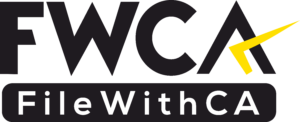How Do Changes in National Minimum Wage Affect Payroll Accounting?

Changes in the national minimum wage can have significant implications for payroll accounting. For businesses, it’s not just about adjusting pay rates; it involves compliance with labor laws, recalibrating financial planning, and ensuring employee satisfaction. Failing to account for these changes accurately can lead to compliance risks, financial penalties, and even reputational damage.
This blog explores how minimum wage changes impact payroll accounting, offering insights into the adjustments businesses need to make and how to navigate these changes effectively.
What Is the National Minimum Wage?
Contents
- What Is the National Minimum Wage?
- Key Ways Minimum Wage Changes Affect Payroll Accounting
- Steps to Adjust Payroll Accounting for Minimum Wage Changes
- Challenges Businesses Face with Minimum Wage Changes
- How Technology Helps with Payroll Adjustments
- Benefits of Adapting to Minimum Wage Changes Proactively
- Case Study: Impact of Minimum Wage Changes
- Conclusion
The national minimum wage (NMW) is the legal minimum hourly wage that employers must pay their workers. It varies by:
- Region: Each country sets its own minimum wage based on economic conditions.
- Employee Type: Rates often differ for full-time workers, apprentices, and part-time employees.
- Age Group: Some jurisdictions have tiered wages based on the worker’s age.
The NMW ensures a baseline income for employees, improving living standards while balancing affordability for employers.
Key Ways Minimum Wage Changes Affect Payroll Accounting
1. Adjustment of Employee Pay Rates
When the minimum wage increases, employers must ensure all employees are paid at least the updated rate. This involves:
- Updating pay structures for employees at or near the minimum wage threshold.
- Ensuring compliance for all employee categories (full-time, part-time, apprentices, etc.).
Payroll Implication:
- Recalculate wages for affected employees.
- Review overtime pay and ensure it aligns with the updated base rate.
2. Increased Payroll Costs
Higher wages translate directly into increased labor costs. For businesses with a large workforce earning near the minimum wage, this can significantly impact budgets.
Payroll Implication:
- Adjust salary budgets to reflect higher costs.
- Plan for associated increases in employer contributions like Social Security, pensions, or healthcare premiums.
3. Compliance with Labor Laws
Compliance with minimum wage laws is mandatory. Non-compliance can lead to:
- Penalties and fines.
- Legal action from employees or labor authorities.
Payroll Implication:
- Implement checks within payroll systems to ensure compliance with current wage laws.
- Regularly update payroll software with the latest statutory rates.
4. Impact on Pay Differentials
A rise in the minimum wage can compress pay differentials between lower-wage and higher-wage employees, leading to potential dissatisfaction among higher-paid staff.
Payroll Implication:
- Evaluate whether pay increments are needed for higher-level roles to maintain equity.
- Communicate changes transparently with employees to avoid morale issues.
5. Overtime Calculations
In many regions, overtime pay is calculated as a multiple of the hourly minimum wage. A change in the NMW directly affects these rates.
Payroll Implication:
- Recalculate overtime rates in line with the updated minimum wage.
- Update employee contracts and payroll systems to reflect new rates.
6. Revising Employee Benefits
Minimum wage changes may indirectly affect employee benefits tied to base wages, such as:
- Bonuses
- Retirement contributions
- Paid leave
Payroll Implication:
- Reassess and align benefit policies with updated wages.
- Ensure accurate documentation of changes in employee contracts.
Steps to Adjust Payroll Accounting for Minimum Wage Changes
1. Stay Updated on Regulatory Changes
- Monitor announcements from government agencies or labor departments regarding minimum wage changes.
- Subscribe to payroll and compliance alerts to stay informed.
2. Review Employee Data
- Identify employees whose wages are below or near the new minimum wage.
- Categorize employees by role, age, and work type to ensure accurate adjustments.
3. Update Payroll Systems
- Input new wage rates into payroll software to automate calculations.
- Ensure overtime and holiday pay rates are updated accordingly.
4. Communicate with Employees
- Inform employees about the changes in their pay structure.
- Provide updated pay slips reflecting the new wages and breakdowns.
5. Plan for Budget Adjustments
- Analyze the financial impact of wage increases on overall payroll costs.
- Adjust operational budgets or pricing strategies if necessary to offset increased costs.
Challenges Businesses Face with Minimum Wage Changes
1. Financial Strain on Small Businesses
For small businesses with tight margins, absorbing higher payroll costs can be challenging.
2. Compliance Complexities
Navigating complex regional or industry-specific wage rules can be overwhelming, especially for businesses operating in multiple locations.
3. Employee Expectations
While minimum wage increases benefit employees, businesses may face pressure to raise wages for higher-paid staff as well.
How Technology Helps with Payroll Adjustments
Modern payroll systems simplify the process of adapting to minimum wage changes. Here’s how:
- Automated Updates: Payroll software often includes automated updates for new minimum wage rates.
- Error Reduction: Automating calculations reduces errors, ensuring compliance.
- Analytics: Provides insights into labor cost trends and potential budget impacts.
Popular payroll solutions like ADP, Gusto, and QuickBooks are widely used to manage such transitions efficiently.
Benefits of Adapting to Minimum Wage Changes Proactively
- Compliance Assurance: Avoid penalties and legal issues by adhering to wage regulations.
- Employee Satisfaction: Meeting wage expectations fosters trust and improves morale.
- Improved Reputation: Demonstrating a commitment to fair pay enhances your brand image.
- Operational Efficiency: Streamlining payroll processes ensures timely payments and accurate reporting.
Case Study: Impact of Minimum Wage Changes
Scenario: A retail chain with 200 employees faced a minimum wage increase of 10%.
Challenges:
- Increased labor costs threatened profit margins.
- Adjusting wages for supervisors to maintain pay differentials.
Solutions:
- Payroll Updates: Automated new rates for all employees using payroll software.
- Budget Revision: Increased product pricing slightly to offset higher costs.
- Employee Communication: Explained the changes to staff, emphasizing the company’s commitment to fair pay.
Outcome:
The company complied with the wage increase, maintained employee satisfaction, and sustained profitability through proactive adjustments.
Conclusion
Changes in the national minimum wage significantly impact payroll accounting, requiring businesses to adapt quickly and efficiently. From recalibrating pay structures to ensuring compliance, these adjustments are crucial for smooth operations and financial health.
By staying informed, leveraging technology, and fostering open communication, businesses can navigate wage changes effectively. Proactive planning ensures compliance while strengthening employee trust and organizational reputation.
Remember, addressing minimum wage changes isn’t just about compliance; it’s about valuing your workforce and fostering sustainable business practices.





